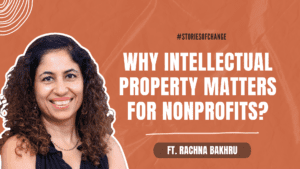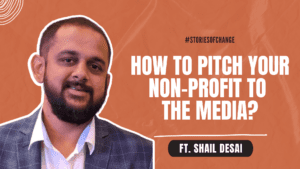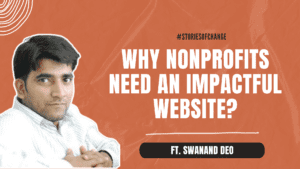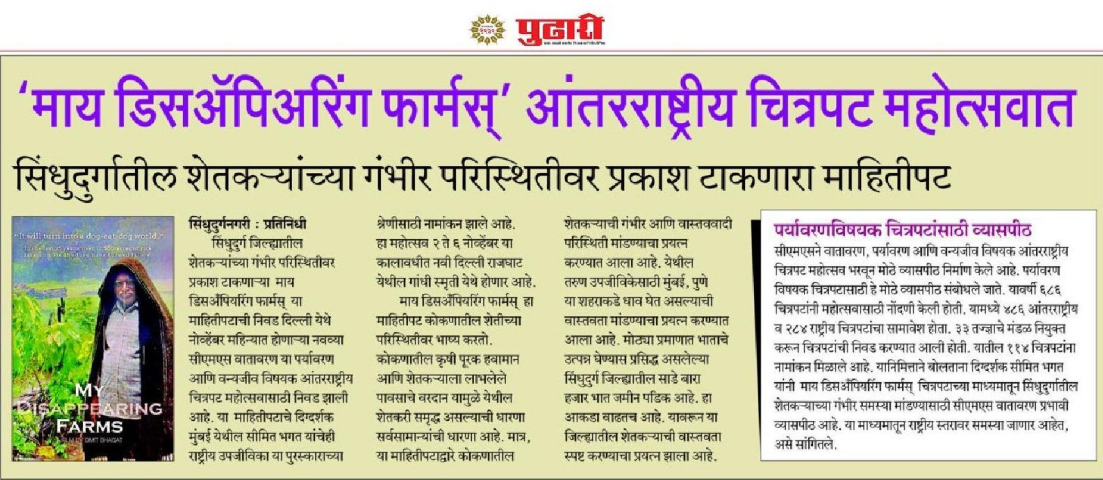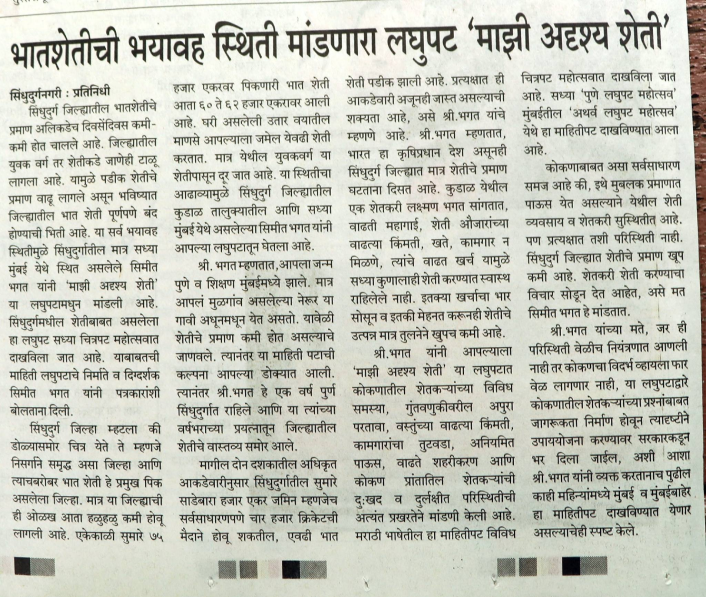In this episode of ‘Stories of Change’, Reva shares her insights on how nonprofits can effectively leverage public relations to amplify their impact. She discusses the strategies that nonprofits can use to craft compelling messages and steps to take in case of a media crisis.
She also shares real-world examples of successful PR campaigns and provides practical tips for organisations looking to enhance their PR efforts.
Reva is a seasoned marketing communications professional with over 9 years of experience in content, public relations, and content marketing. Having worked with Fortune 500 companies and prestigious agencies such as Edelman, Instinctif Partners, H+K Strategies, and Ogilvy, she now excels as an independent consultant. Over the past few years, Reva has leveraged her extensive background to drive impactful communication strategies and brand growth for a diverse range of clients.
Transcript of the Episode:
Simit: Thank you so much, Reva, for agreeing to be on this podcast. It’s really a pleasure to have you.
Reva: Same here.
Simit: Great. So let’s get started. So you’ve been working in the public relations space for more than ten years now. You’ve worked with a range of brands. Could you share your experience of working with nonprofits in this space?
Reva: The nonprofit sector works very differently when it comes to public relations as compared to, say, a product or a service in the B2B or the B2C side. And that is because it comes with so many riders, you need to have some sort of a different level of sensitivity while working with these clients, because there could be organisations working with young children, there could be organisations working with spreading awareness around certain diseases. There could be organisations on the environment conservation side, so on and so forth. So I think as a PR professional, I have felt that it requires a different type of sensitivity and sensibility when it comes to working in the social sector.
As a PR professional, I have felt that it requires a different type of sensitivity and sensibility when it comes to working in the social sector.
Simit: So typically, nonprofits do not really engage with a PR professional alike either. I think the organisation would reach out to a PR professional maybe in two situations. One is when there’s a fundraising campaign or something of that sort or when there is a crisis. So I want to ask a very basic and a very fundamental question.
Why should nonprofits engage with a PR agency or a PR professional in the first place?
Reva: I think, first of all, the founders of the organisations should be clear as to what is their goal from the PR efforts. As you correctly mentioned, many times there are just very lean smaller projects that they want to do when there is a fundraising campaign. But if that is their purpose as an organisation, I would beg to differ that doesn’t solve any purpose, that’s because in no way are they able to showcase their work in an engagement of 2 to 3 months, which is very focused on just targeting the investor or a particular stakeholder who’s ready to fund any of the causes that they stand for.
I mean, in today’s day and generation, you also come from a journalism background, Simit. We all know that there are ways to identify what’s fake and what’s not, what’s just a push on social media or through PR efforts and what is a genuine cause. And then of course, even from a story standpoint, there’s just as much glossing that you can do as a PR professional and reach out to media houses. And of course, people sitting on the other side of the table like yourself and other esteemed journalists in the fraternity, they have their own ways and means to research and to check facts and figures.
So I don’t think that doing PR for a very limited time frame makes any sense for a social sector organisation. I do understand that there might be issues on the funding side in order to sustain these efforts. But we always have alternatives. We can have volunteers, we can have brainstorming sessions, we can phase out execution into different times as and when required, however, doing very limited targeted PR to say that, hey, I am supporting cause A and why don’t you give me money to take that cause or that awareness campaign forward, it’s not that easy and your stakeholders are not that foolish too.
I don’t think doing PR for a very limited time frame makes any sense for a social sector organisation.
Simit: You raised quite a few issues which I would want to touch upon as we move forward. But just to understand. So typically, when you’re doing strategy for a PR campaign, what are those components that you look at when it comes to designing a strategy? Could you maybe walk us through that?
Reva: Sure. Any organisation that comes to us with a request to do public relations, we first try and understand what it is that they want out of those PR efforts. Do they just want to shift the authority of the founders? Because, see, the founder has some novel ideas or has an opinion that he wants the masses to resonate with, and then media becomes the vehicle to do it, and we become the agents to reach out to media houses to get it done.
So that’s one way of looking at it. The other is that do you want some sort of financial support from investors? Then the kind of tactics and the kind of strategy that goes into designing a campaign it’s very different, even the kind of publications that we deal with. It might not be something that you see on Facebook, but probably something that you see on LinkedIn.
It’s not something that you will see on ScoopWhoop, but something that you might see in Business Today. So that’s the difference that I would like to point out that depends upon the aim, objective and the stakeholders that you are targeting. That’s how an entire strategy is sketched right at the onset of the engagements that we take up for our social sector or even any other sectors’ client.
And then, of course, it’s a matter of execution. Now within that, one of the important hooks that come in is the content part. It’s about what sort of content are you writing in, what style of English or any other vernacular language, and is it media friendly or not? Is it good enough to tell your story in a manner that it resonates with a journalist or even from the readership standpoint, if it makes sense for them to take a particular page or a lead forward.
And that’s how it works. The reach and readership of a mainline vs something in the digital space vs something that you’re trying to target in an application of sorts like InShorts, the word count, the tonality, the objective and the readership all would be very different. And that’s what we want to focus on at the strategy stage, after having understood from the client what their requirements and target audiences are. These two are the key.
Simit: You talked about target audiences. So normally when any organisation wants to do PR, they are unsure as to who should be the right target audience because you would want to reach out to as many people as you want. So from an organisation’s point of view, if one has to work on this, how can they identify the right set of target audience?
Reva: I think it’s a great question. And I don’t have immediate answers, but this is something that we can chalk out once we speak to the clients to understand where they are in their communications journey. Suppose for example, we’ve had clients, we’ve had founders who have great thoughts but when I give them a questionnaire, they are unable to put two and two together in order to answer a particular question. That’s where probably in-person conversations or maybe calls or frequent visits to the client’s office and things of that sort help us absorb and understand what sort of potential objective they should have.
Then we put the words to their ideas. A client can approach us with a certain sketchy idea. They don’t know about, say, go-to-market strategy or they don’t know the kind of media, as you pointed out, like everybody wants to reach out to a mass audience, media alone cannot do that in today’s world. Social media will also play a pivotal role if it’s a show brand.
We might be running ads on Instagram, but if it is a legal form, I think LinkedIn will do the trick. This is along with the media publications, which form an important part of the overall communication strategy.
Simit: You talked about how organisations are timed. They come to you and they do not necessarily have the clarity in terms of what it is that they want to actually achieve. They might know that, okay, we want to engage a PR professional, but they may not necessarily understand what those goals could be like.
Simit: So can you share a little bit about your experience as to typically what do organisations come to you for? Maybe if you could outline some examples, that would be great.
Reva: Sure. So I would say, first of all, many organisations approach us and they say we want to do PR. For them, PR is equal to a press release. Now, press releases are not equal to PR. Let me put that out. That’s one thing that we face as a challenge from a requirement standpoint. That hey, this is the write-up. Push it into the media and get me 50, 60 pieces of coverage. It doesn’t work like that in today’s generation, and especially post the COVID situation where a one-sided way of communication is not effective, first of all. Second, many times a press release is a tool, it’s a paid platform when it comes to media outlets, and they put out a disclaimer saying that.
Press releases are not equal to PR. Let me put that out.
So, your reach anyway will be limited, and your credibility won’t go up. It might just come down because people know you paid to get there. So that’s one problem with understanding PR press releases and the execution side of things from a reach standpoint. The second is everybody wants to be on the first page of Forbes, now, I can’t do that.
And it’s very challenging. It’s very difficult to sometimes tell them that the kind of work that you are doing should have that sort of merit to organically reach there. Yes, my pitch, my words, my media relations will matter as an individual, as an agency, as a professional. But, your work needs to be that authentic and that credible to reach there.
And it won’t happen in a week, it won’t happen in a month either in most situations. So, just setting the expectation right from a media and from a client education standpoint is also one of the challenges that we face. So, sometimes there’s a mismatch when it comes to expectation and reality. And besides that, one of the things that we encounter is probably familiarity with terminology.
So I can say, ‘Hey, Mr. Client, I’ll get your authored article published’. And they’re like, ‘What is that? And will my picture come, will it be in print, will it be in digital? Do I have to look a certain way to contribute an authored article’. And I am like, ‘No it’s your thought that will matter more than your face’.
So it’s very amusing and it’s very challenging to make a client, first of all, be informed enough and ask them that after having gathered the sort of information and knowledge, do you still want to go ahead with public relations? Because these are the tangible results and these are the intangible results. And this is what I can quantify for you, and this is something which I cannot quantify to simply say, your reputation changing in the mind of an individual from point A to B, I will not be able to quantify the reach of a particular article or a publication.
If I can quantify it, then I can come back to you with those sorts of numbers and metrics and results. So just to be on the same page from that standpoint, I mean, the client needs to be a bit patient and appreciative of someone else’s time as well when it comes to us putting efforts to make them understand what leap of faith are you going to take, how long will it take and what results can it potentially have.
Simit: Yeah, first of all, like educating the client is one part of the job, one part is obviously to deliver what you are planning. But I think even before the project actually starts, I’m sure a lot of energy goes into educating the client. So from the cases at your work, from the work that you’ve done with other organisations, could you share some examples of when an organisation came to you and how the PR efforts sort of helped them in whatever goals that they had set out?
Reva: So one of them and you would ask this question around the crisis part as well. So just taking the same answer forward, I think we were approached by AirIndia, post or I would say almost during the COVID situation where there was a lot of misinformation, there was a lot of chat around HEPA filters and things of that sort, and of course a lot of mismanagement on the ground and with the flights and heckling and people not being able to reach their hometowns and stuff like that.
Simit: This was before the Tata acquisition?
Reva: Yeah.
Simit: Okay, Perfect.
Reva: So that’s where we would approach it with a crisis communication sort of mandate that, hey, this is happening and that this is impacting the reputation of the airline, what can you do? And we came up with the idea to focus more in terms of quality and quantity on the positive side of the story and the positive content and how this particular airline, despite all the challenges, is still trying its level best to accommodate the requests coming from the customers and the heavy bookings that they were getting.
So we engaged with influencers and with media houses and we told them, why don’t you share your personal journey and how this particular airline has played a positive role or a positive part in that journey. And we had some hashtags and eventually, we got more than a million impressions on that particular campaign and when the positive stories started to flow on social media platforms and in the media, the negative parts or the parts where people were critical, it started to die down on its own because it was like people were trying to go with the flow and they understood that a particular hashtag or a particular story was potentially going viral. And it started to influence the way that they were engaging with the brand. So I think that’s a real impact we created in a crisis sort of situation where positive conversations, intelligent content, hooks and potentially while the content was in one way seated on the other, it was amplified and finally it started to resonate.
So from a tactical and strategic standpoint, that’s how we approached a crisis communications mandate. So all these small, small snippets from real-life situations, I think that really helped us from a storytelling and sharing content standpoint. And it turned out to be a beautiful content marketing cum PR mandate for us.
Simit: Talking about crisis management, I remember a few years back there was a case of an organisation that was based out of Hyderabad, and they worked with rescued children. And there was a story that was done by one of the international publications. I’m not sure whether it was Reuters or BBC, but they had done a negative story about this organisation, and they quoted some of the girls who were rescued as to how they were not treated well. And that story just blew up and the organisation started getting calls from their donors saying ‘Can you clarify’? And ‘Why is this news being published’? And the organisation just didn’t have the means or they didn’t know how to tackle something like this.
And the response wasn’t ideal. I’m sure, they could have done so much better if they had a proper policy or some strategy in place as to dealing in such cases. So could you share your thoughts as to what it is that organisations can do in such cases when there is bad publicity or bad media?
Reva: I think there should always be some sort of protocol, an SOP in place for these just in case of situations which don’t happen very frequently. And many a time, we also put out a particular Word document or an Excel saying that, hey, this is your manual when it comes to crisis communications and clients tend to ignore it because they feel it will not happen.
There should always be some sort of protocol, an SOP in place for crisis situations, which don’t happen very frequently.
Or if it happens, we’ll be able to deal with it. So it’s the lack of knowledge or sometimes the arrogance that stops them from accepting a particular situation that comes from an experienced professional. But having said that, organisations, whether they have a PR person or not, must have some sort of standard protocol in place for these what-if situations.
And what consists of a what consists of the process of this protocol is that, first of all, I don’t think that they should panic or start sending out hasty statements, which a lot of people do. I think the first step is to just sit back, analyse the situation, think through it, and then come up with a solution. The second is that probably a voice of credibility should give a strong statement, which should be very well crafted from the choice of words standpoint as the event so that’s two.
During a crisis situation, a voice of credibility should give a strong statement, which should be very well crafted.
And third is, of course, ensuring that it reaches out to publications or to platforms that have a good reach. You could be sending out your statement in a magazine that nobody subscribed to right now and say that I’ve done my job as PR.
You gave me a statement and I sent it out to the media. Whether it gets picked or not is not my headache. So, that’s where, as I said, some sort of sensitivity and sensibility will play a crucial role. And in the case that you are saying when it comes to criticism from the media, I think one is to also reach out to the person if they have a byline on something and try and understand what their sources were.
And the second is also to ensure that your employees are on the same page as far as the statement goes. So your employees are first of all they are your own micro advocates. And if it’s an organisation which has even 20, 25 or 100, 150 or thousands of employees and they start putting out a particular statement, it will create a lot of confusion as to what is the truth and why is this happening.
And I think it’s coming from a place of anguish and confusion, or is this something which can be relied upon as a news source? So I think checking with journalists, understanding sources and ensuring that everybody is speaking the same language within the organisation is also pretty important in a crisis communications sort of situation. If anybody gets into that, taking accountability when it comes to a crisis, it’s a very brave move and it needs to be thought through very well and there should be some level of preparedness, I would suggest, if such situations come in and what are the steps to follow because you might be put in such a situation that you are so stressed that you don’t know what to do. But if you have a manual, if you have some pre-prepared steps to follow, it just becomes easier because you might not be consciously thinking about something. But if there is an instruction given to you, at least you can follow it.
Simit: Absolutely. I think that’s some really useful tips for organisations and as you rightly mentioned, I think one thing that organisations generally do not have is SOP key because no one thinks that something like this might occur. That’s the general sort of response—why should you invest time and resources into creating something which may or may not happen?
That’s the general thought process. I don’t know whether something like a PR function can be built within an organisation. I mean, I’m talking about small or midsize organisations. Of course, large foundations would have the teams and they could even have someone in-house. But for smaller or midsize organisations, is it possible to develop this function in-house, maybe have their communications person take up this role as well?
And so is it really possible to have this function in-house or you would say that it’s better for an organisation to kind of have an agency or a professional?
Reva: I would see that it’s better to have an agency or a professional to do it. One, as you rightly said, it will require a lot of time, energy and effort, but more importantly, it would require different skill sets. Finding the same thing in one person. It might just be a bit too much. So it’s very difficult to find all of these skill sets in one person and what probably a professional or an agency or even a boutique firm can do for you is have two people, three people who are great with their work, who are specialists in their work, and your POC is a generalist who manages these resources for you.
And that’s the reason why you should hire somebody who is adept and who’s worked in this field for a while, you would want to outsource your PR, you want to keep it to yourself and expect one person to do everything, which is practically not possible either. And they might have five out of those ten skills just understanding the tip of the iceberg.
They might not know how to make a design. If you take away Canva from them, they might not know how to probably quantify and improvise a campaign. It can be even if you’ve given them your credit card, the company’s credit card to go run X or when it comes to media relations, again, different agencies or different individuals have different strengths.
So it’s critical and it’s important to understand what sort of media not only from a journalist’s standpoint but from a niche standpoint do they engage. So social sector organisations now have their eyes and ears open when it comes to hiring either an individual with the expectation of being their Corp Com or a PR person or an agency. It’s I would say it’s very important, more so for social sector organisations to have the multiple tests, to have multiple layers of understanding with the kind of person or the kind of agency or the kind of potential hire that they’re going to engage with because funds might be a crunch.
So investing time in understanding the person who is either going to be taking care of your account from the agency side or giving their professional services might just be worth it. Or you should just give it a shot.
Simit: Yeah, I mean, as you rightly mentioned, a lot of data that even I come across for a comms person or social media is the person needs to be good with content, the person needs to run that, the person needs to do SEO, the person needs to update the website, the person needs to create videos. These are very specialised roles. For each one of them, there are specialised people for that. And, as you rightly mentioned, if you can find someone like that, please send all the details. As I would love to hire. I get the same feeling. So I totally resonate with what you’re saying. I think we’re almost at the end of our podcast.
Simit: I want to ask you if there are any final thoughts or any takeaways that you would like to highlight or mention for organisations in the social space if they are interested in working with an agency or a professional on the public relations front.
Reva: I think my final thought would be that PR is a slow process, please have patience and trust when you are hiring either an individual or an agency to take your communications mandate forward. The second is to try even if it is not perfect, to try and filter out your thoughts as much as possible. And the most important question still remains why?
PR is a slow process, please have patience and trust when you are hiring either an individual or an agency.
So if you don’t know what PR is, maybe ask relevant questions or do your own research. And the last is, as I said, a little bit of kindness will go a long way, at least in the social sector. A little bit of sensitivity as to the kind of causes that you are dealing with.
Go viral or not, You’re dealing with the typical niche issues that might require a softer hand or a more sensitive sort of deal. So please be mindful of it and don’t get trapped in the marketing lingo. And, maybe with time, people learn to differentiate what’s gimmicky and what’s actually public relations.
Simit: Thank you so much for sharing your insights Reva. It’s been a pleasure speaking to you. And I’ve learned a lot in this conversation. Thank you for giving your time for this.
Reva: Thank you for the lovely chat and thanks for having me.

